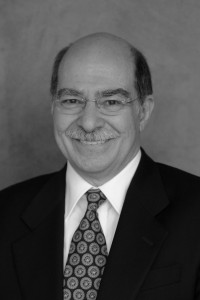February 27th, 2014
Steve Jobs Rejected the First Medical App in 1977
Larry Husten, PHD
There’s been a lot of speculation that future Apple products will include health-related apps and biometric sensors. Here’s the story of what might have been the first Apple medical app, except for the fact that in 1977 Steve Jobs had absolutely no interest in going in that direction.
George Diamond is now retired after a long and very distinguished career as a cardiologist at Cedars-Sinai Medical Center in Los Angeles. But in 1977 he was just starting his career at Cedars, where he was working on cutting-edge devices and statistical methods to improve the diagnosis of heart disease (a major problem that even today is far from being solved).
Diamond’s work involved one of the first attempts to use Bayes’ theorem — a sophisticated and complex tool for analyzing probability — and it involved a lot of computation. In 1977 there weren’t a lot of choices. Here’s his (lightly edited) story:
“I bought one of the very first programmable hand calculators — the TI 59. It had magnetic cards that stored 1k of memory, and I was able to write a program that used Bayes’ theorem to calculate the probability of disease based on the test results. It worked wonderfully, except that I immediately exhausted the 1k of memory because there were so much data.
Just about that time the Apple II was introduced. There was a computer store in Santa Monica — one of the very first computer stores — called ‘The Computer Store.’ So I went there to see an Apple II in action. I fell in love with it immediately and purchased it with my own money. (And by the way, you know what it cost? Forty-eight k of memory and 2 floppy disk drives and a 9″ monochrome monitor: I shelled out $2700.)
With the Apple II I wrote a reasonably sophisticated program that analyzed multiple diagnostic tests using Bayes’ theorem for the diagnosis of coronary disease. Now I thought it was really great and should be marketed, but it needed to be expanded with people who really knew something more about programming than I did. So I picked up the telephone and called Apple in Cupertino. I told the secretary that I wanted to speak with somebody about a medical application for the Apple II computer. The secretary connected me directly to Steve Jobs. (Of course I didn’t know who he was. I didn’t even recognize the name as being one of the people who had actually invented the thing.)
He listened to me for a couple of minutes on the phone. I said I’d love to come up and talk with him about my idea. He said sure, any time, just pick a date. and so I did, and I got on a flight to Cupertino. When I got to his office he looked exactly like he always looked in the future — he was wearing jeans, a black t-shirt, and sandals. His desk was absolutely cluttered with all kinds of stuff on it, including, of course, an Apple II.
I described to him what I had been doing, and how impressed I was with his device. Other people thought it was a toy but I saw something serious in it and thought that eventually a computer like this should be on the desk of every doctor in the world. I told him that I thought my program could be a means toward that end, and I would love to get his thoughts about it, and if would he be willing to do something to help us advance that idea.
He said he was very impressed with what I had done, and that he agreed about the potential for the future, but also said, ‘frankly I’m not interested in working with you on this.’ I asked why. He said: ‘You have to understand. This is something that nobody in the world yet understands. I can’t be distracted. I’m trying to make the best hammer I can make, the best hammer in the world. You can use my hammer to tear something down, or you can use it to build something up. I really don’t care what you do with my hammer. I just want to make the best possible hammer. And what you are doing is a wonderful bit of construction, but to me it’s a distraction.’
So that was pretty much the end of our conversation. There was no where else to go after that so I thanked him very much for his time and flew back to LA.”

